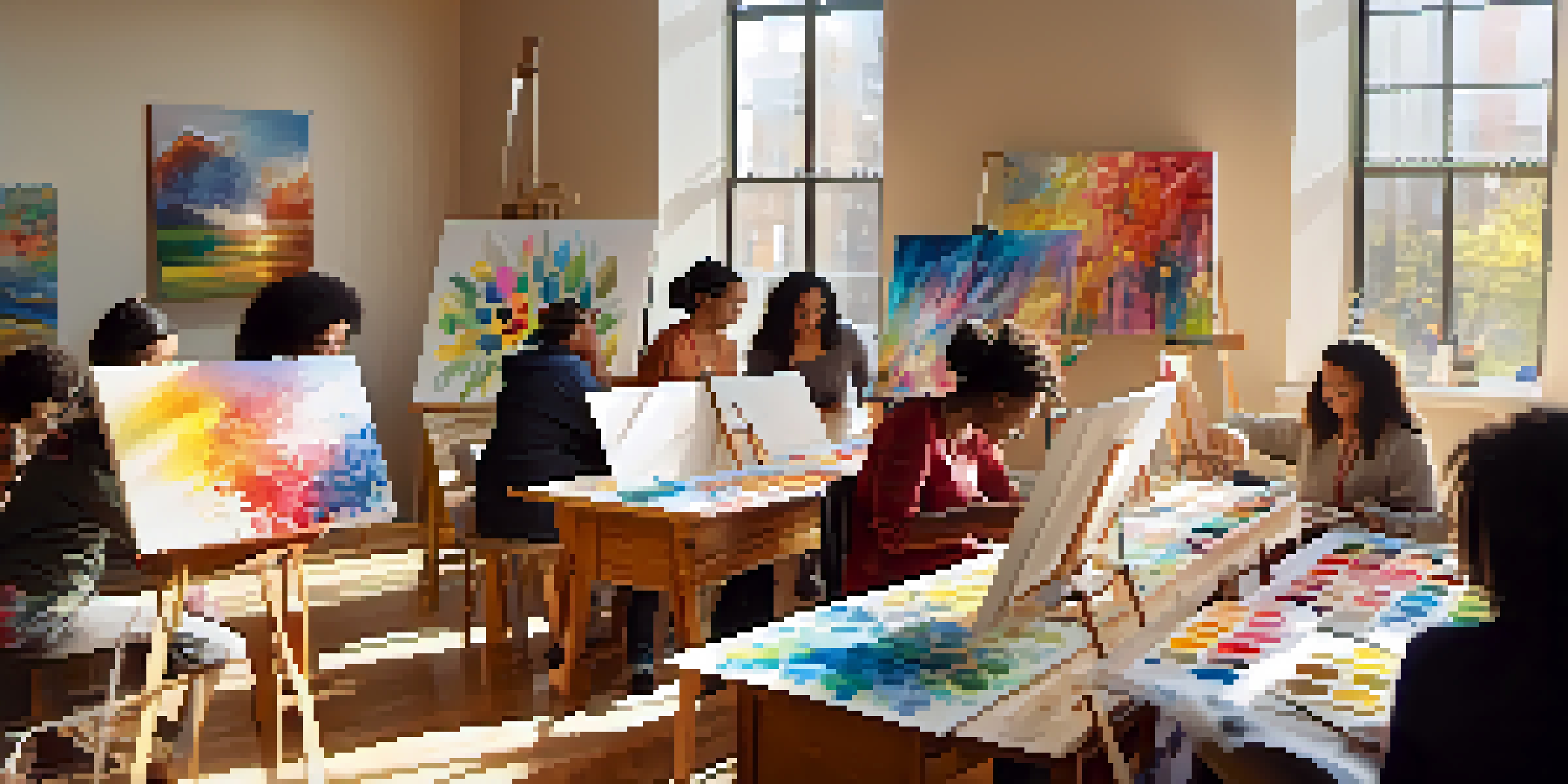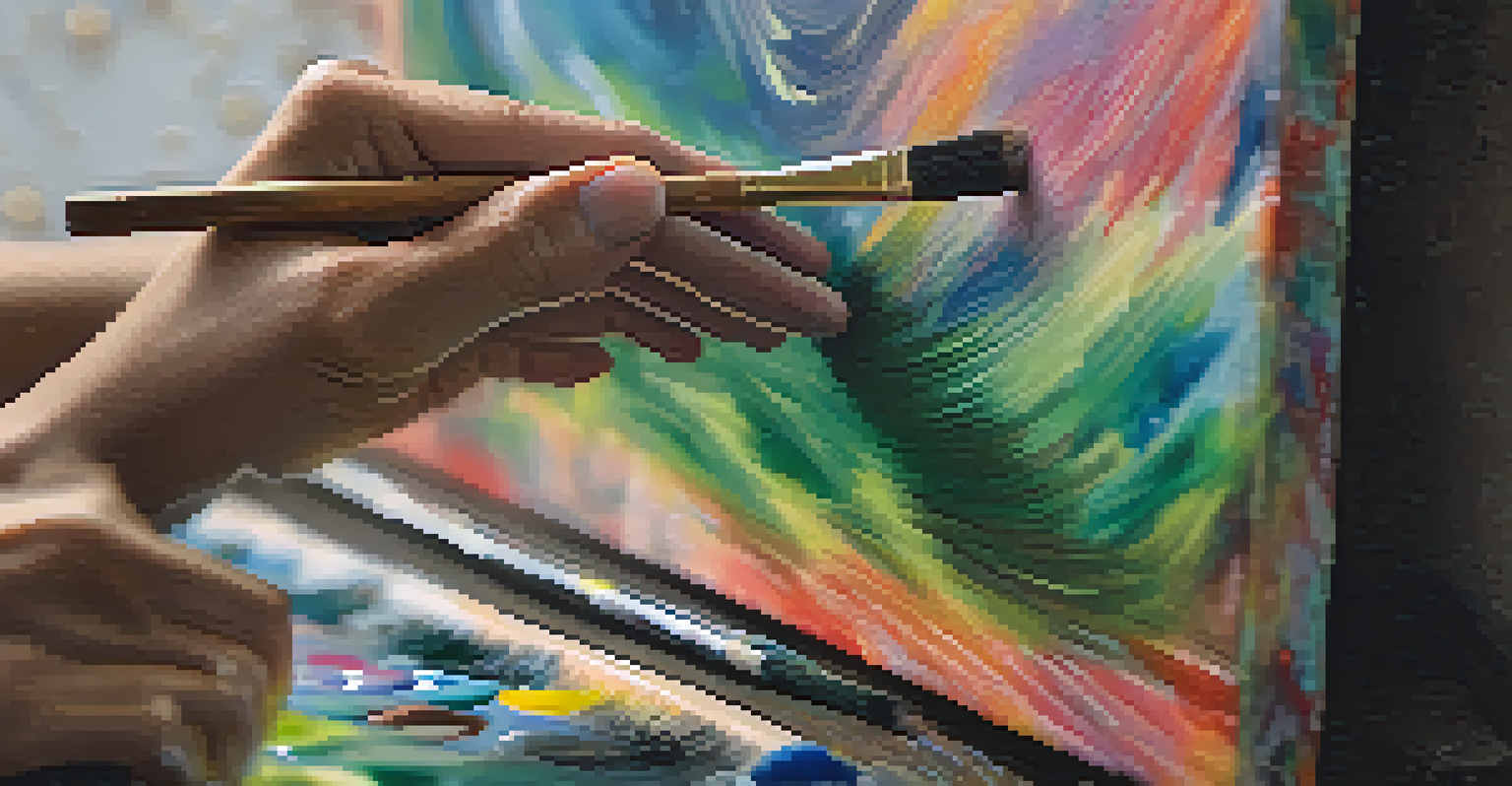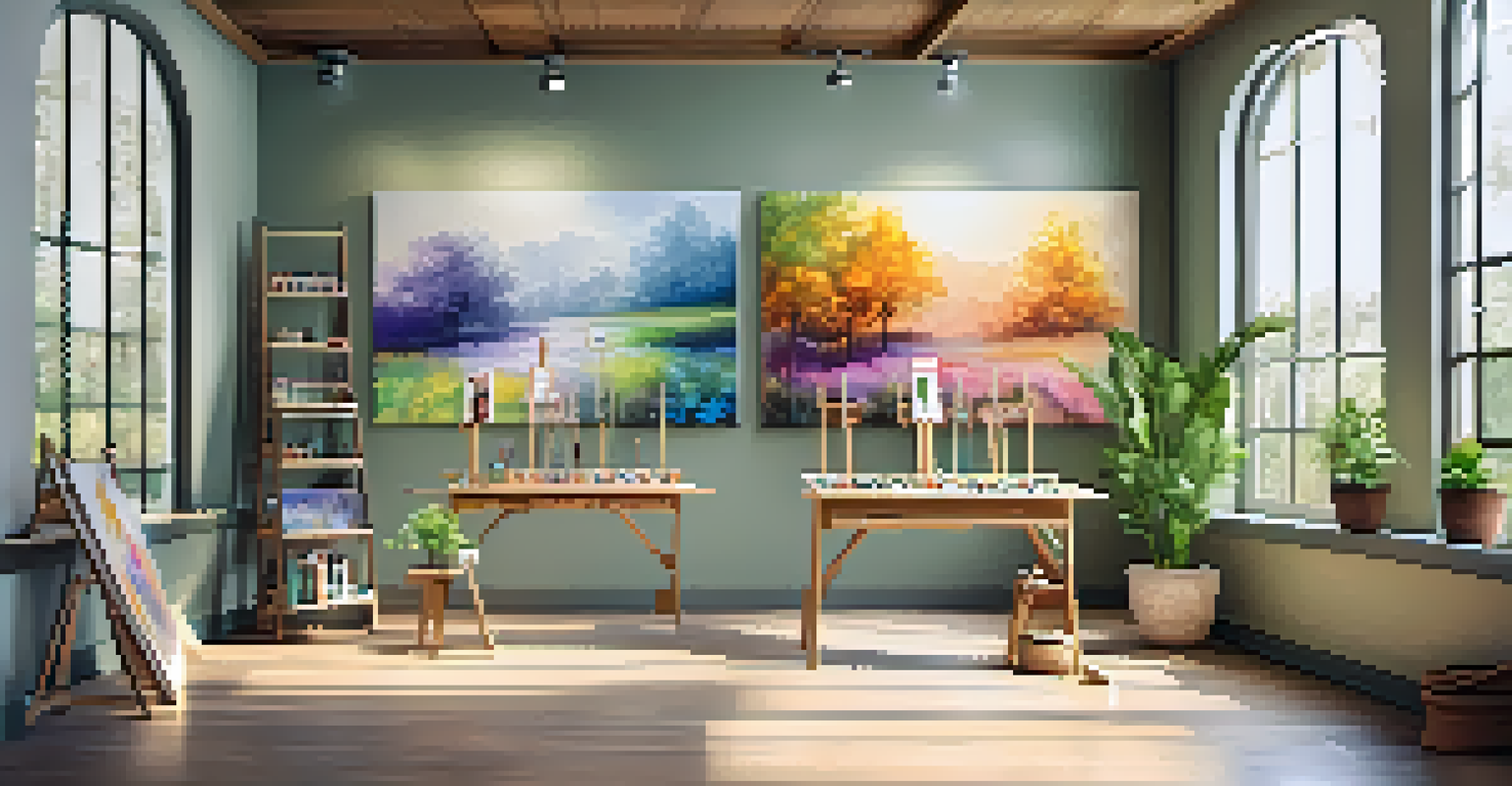Art Therapy and Mindfulness: The Healing Power of Painting

Understanding Art Therapy and Its Benefits
Art therapy combines creativity with psychological healing, allowing individuals to express emotions and explore their thoughts through art. This therapeutic approach is especially beneficial for those who find it challenging to articulate their feelings verbally. By engaging in the creative process, clients can uncover insights about themselves that may be hidden beneath the surface.
Art is not what you see, but what you make others see.
The benefits of art therapy extend beyond emotional expression; it can also alleviate stress, reduce anxiety, and improve overall mental well-being. Engaging in creative activities stimulates the brain, releasing endorphins that enhance mood and promote relaxation. This makes art therapy a valuable tool for anyone seeking to improve their emotional health.
Moreover, art therapy can be tailored to suit individuals of all ages and backgrounds. Whether you’re a seasoned painter or a complete novice, the process focuses on the journey rather than the final product. This inclusive nature makes art therapy accessible and appealing to a wide audience.
Mindfulness: A Key Component of Art Therapy
Mindfulness is the practice of being present and fully engaged in the moment, without judgment. When combined with art therapy, mindfulness enhances the therapeutic experience by encouraging individuals to focus on their feelings and thoughts as they create. This mindful approach fosters a deeper connection to the self, allowing for profound personal discovery.

In art therapy, mindfulness can be practiced through techniques like deep breathing and intentional focus on colors and shapes. These practices help to ground individuals, making it easier to access their emotional states. By being present in the moment, clients can process feelings that may have previously felt overwhelming.
Art Therapy Enhances Emotional Healing
Art therapy combines creativity with psychological healing, allowing individuals to express emotions and alleviate stress.
The synergy between mindfulness and art therapy cultivates a safe space for exploration and healing. Participants often report feeling calmer and more centered after sessions, as they have the opportunity to release pent-up emotions through their artistic expression. This calming effect can be a powerful catalyst for personal growth.
The Role of Painting in Healing
Painting serves as a potent medium for self-expression and emotional release. The act of applying paint to canvas can evoke a range of feelings, from joy to sadness, enabling individuals to process complex emotions. This release is often cathartic, leading to a sense of relief and clarity.
Creativity takes courage.
Moreover, painting allows for creative problem-solving and innovative thinking. As individuals paint, they often find new ways to interpret their experiences and emotions, which can lead to breakthroughs in their healing journey. This creative exploration can be a transformative experience, helping individuals view their challenges from a fresh perspective.
Additionally, the tactile nature of painting—mixing colors, feeling the brush on canvas—engages the senses, further grounding individuals in the present moment. This sensory experience can enhance mindfulness, making painting not only an artistic endeavor but also a therapeutic one that promotes healing.
How to Get Started with Art Therapy
Getting started with art therapy doesn’t require any special skills or artistic knowledge. All you need is a willingness to explore your creativity and express your emotions. Many art therapists offer workshops or sessions that guide individuals through the therapeutic process, making it accessible and supportive.
You can begin your journey by gathering basic supplies—paints, brushes, paper, or even digital tools. The key is to create a space where you feel comfortable and free to explore without judgment. Remember, there are no right or wrong ways to create art; the focus is on your personal experience.
Mindfulness Deepens Creative Experience
Incorporating mindfulness into art therapy fosters a deeper connection to self, enhancing personal discovery and emotional processing.
If you're unsure where to start, consider focusing on a particular feeling or memory. Allow yourself to paint intuitively, letting your emotions guide the brush. This process can be incredibly freeing and may lead to surprising insights and discoveries about yourself.
Incorporating Mindfulness into Your Art Practice
Incorporating mindfulness into your art practice can significantly enhance the therapeutic benefits of painting. One effective method is to start each session with a few minutes of mindful breathing, centering yourself before you begin. This helps to clear your mind and prepare you for a more focused creative experience.
As you paint, try to maintain awareness of your thoughts and feelings without judgment. Notice how the colors and movements affect your mood and emotions. This practice not only deepens your connection to the artwork but also cultivates a greater understanding of your inner landscape.
You can also try to remain present in the moment by focusing on the physical sensations of painting—the feel of the brush, the texture of the canvas, and the colors blending together. This sensory awareness can transform your painting experience into a meditative practice, enhancing both creativity and emotional release.
The Impact of Group Art Therapy Sessions
Participating in group art therapy sessions can amplify the healing benefits of painting. Sharing the creative space with others fosters a sense of community and support, which can be incredibly beneficial for emotional healing. It allows participants to connect over shared experiences and feelings, creating a safe environment for vulnerability.
Additionally, group sessions often provide opportunities for collaboration and inspiration. Seeing how others express their emotions through art can spark new ideas and encourage individual exploration. This collective energy can enhance motivation and creativity, making the therapeutic process even more engaging.
Group Sessions Foster Community Support
Participating in group art therapy amplifies healing benefits by creating a supportive environment where individuals can connect and collaborate.
Moreover, group art therapy encourages communication and social interaction, which can be particularly healing for those who feel isolated. The sense of belonging that develops within these groups can lead to lasting connections and friendships, further contributing to overall emotional well-being.
Finding Professional Support in Art Therapy
If you’re considering art therapy, it’s essential to find a professional who is trained and experienced in this unique form of therapy. Look for certified art therapists who have a background in psychology and art education. They will be equipped to guide you through the therapeutic process effectively.
Many therapists offer initial consultations, which can help you determine if their approach aligns with your needs and goals. During these sessions, you can discuss your expectations and any specific challenges you wish to address through art therapy. This personalized approach can make a significant difference in your healing journey.

Remember, art therapy is a collaborative process. Your therapist will work with you to create a safe space for exploration, ensuring that your unique experiences and emotions are honored throughout the journey. This supportive relationship is crucial for effective healing and personal growth.